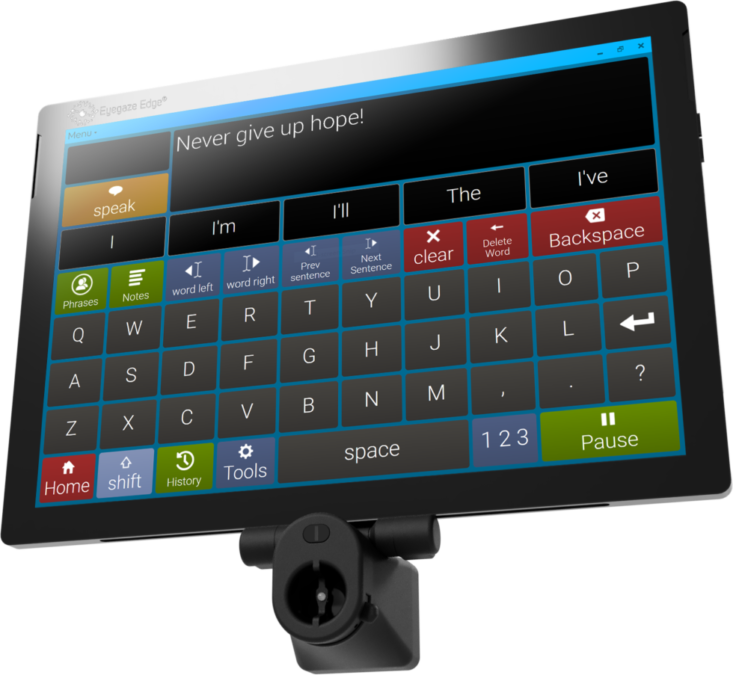Eye tracking technology continues to gain widespread attention for its many uses including aiding in assistive technology, gleaning insights for marketers, and enhancing medical research. But how does this innovative technology work?
Much more complex than a camera “watching” your eyes, there is more than meets the eye behind this fascinating technology. Let’s take a look at the processes behind eye tracking technology, like our Eyegaze Edge©, which is changing the lives of so many users.
The first task of an eye tracker is to detect eye presence. The system must find the eyes to begin the tracking process. In possible future iterations of our products, features such as power saving could be triggered when the eyes are not detected.
Eye trackers are adept at studying eye movement and patterns. Researchers can study human behavior, and doctors can diagnose injuries and diseases by assessing the movements of your eyes, which can reveal conditions like concussions and autism.
Eye tracking technology is also used to study gaze direction and gaze point. Researchers can study how people interact with computers and other interfaces to determine what attracts – and holds – people’s attention.
Eye trackers measure pupil size and dilation, which can be studied as an indicator of excitement to show which elements on a web page, for example, are most engaging. Also, pupil dilation can reveal impairment, such as in a concussion.
Finally, eye tracking technology monitors eyelid closure. Users’ sleepiness can be monitored when they are driving a vehicle to improve operator safety.

